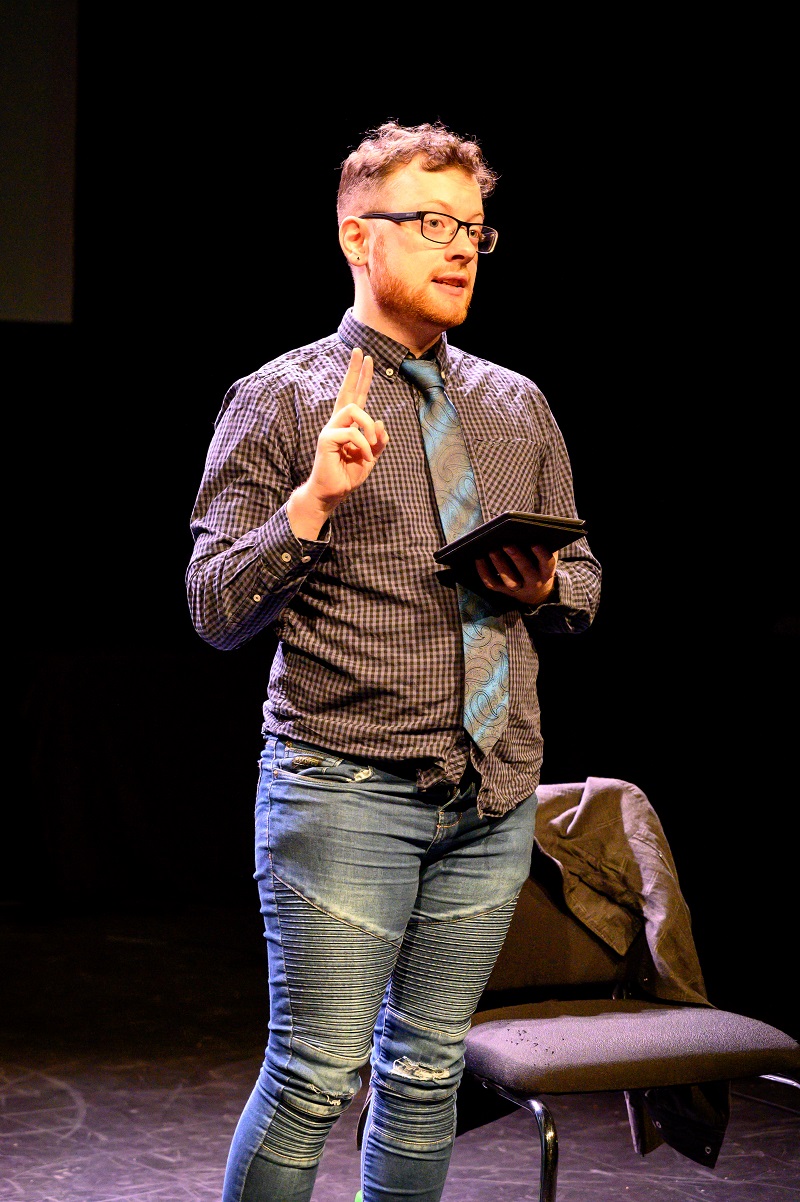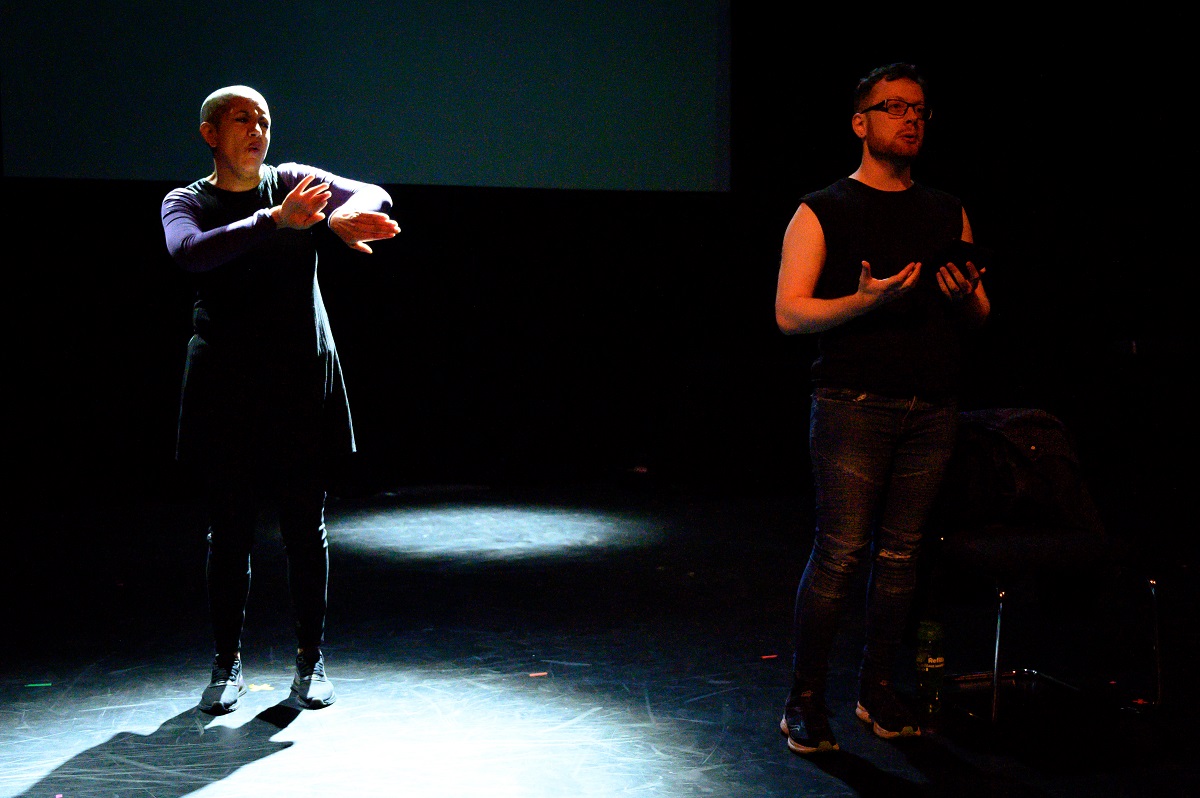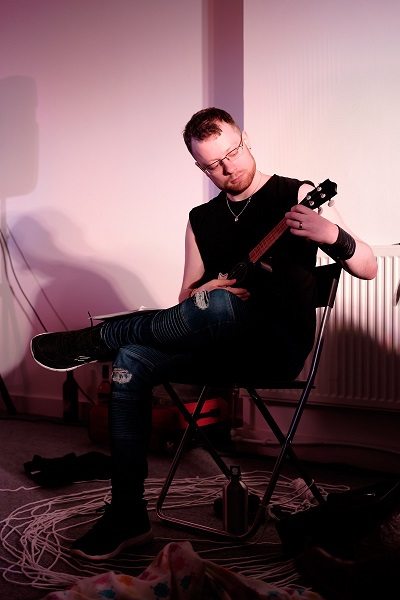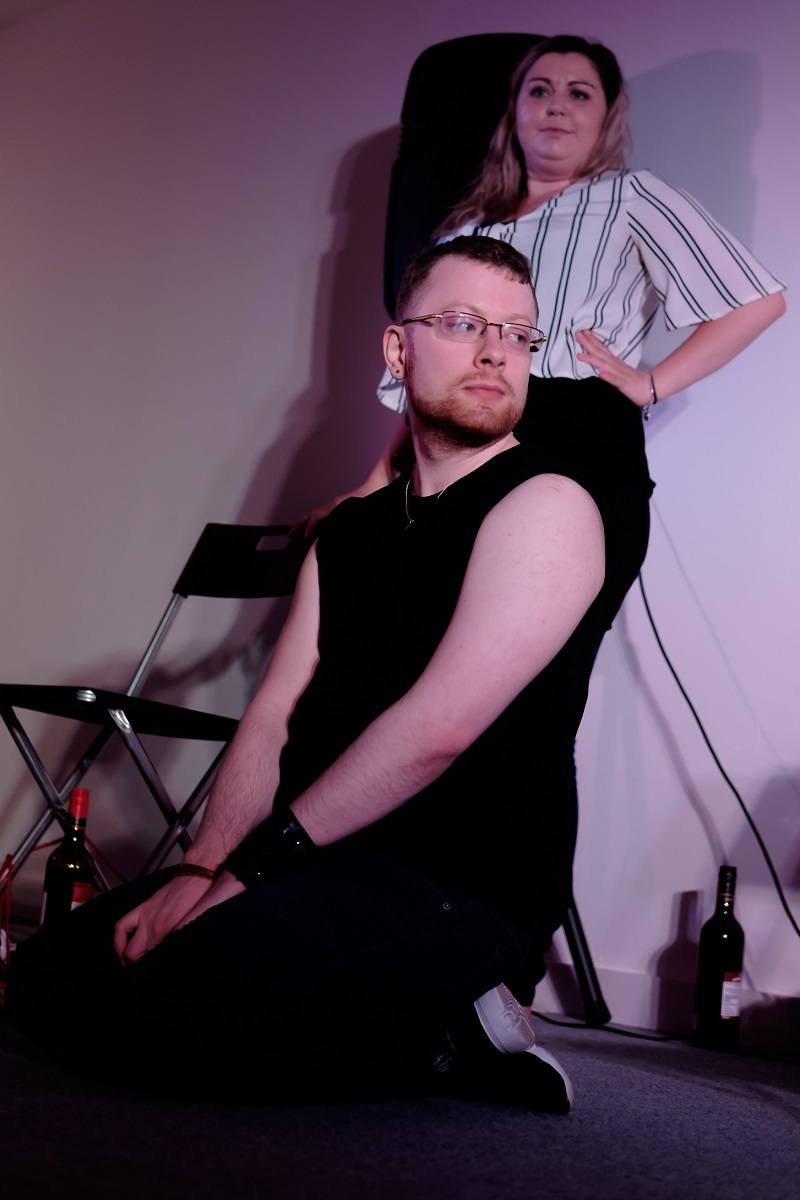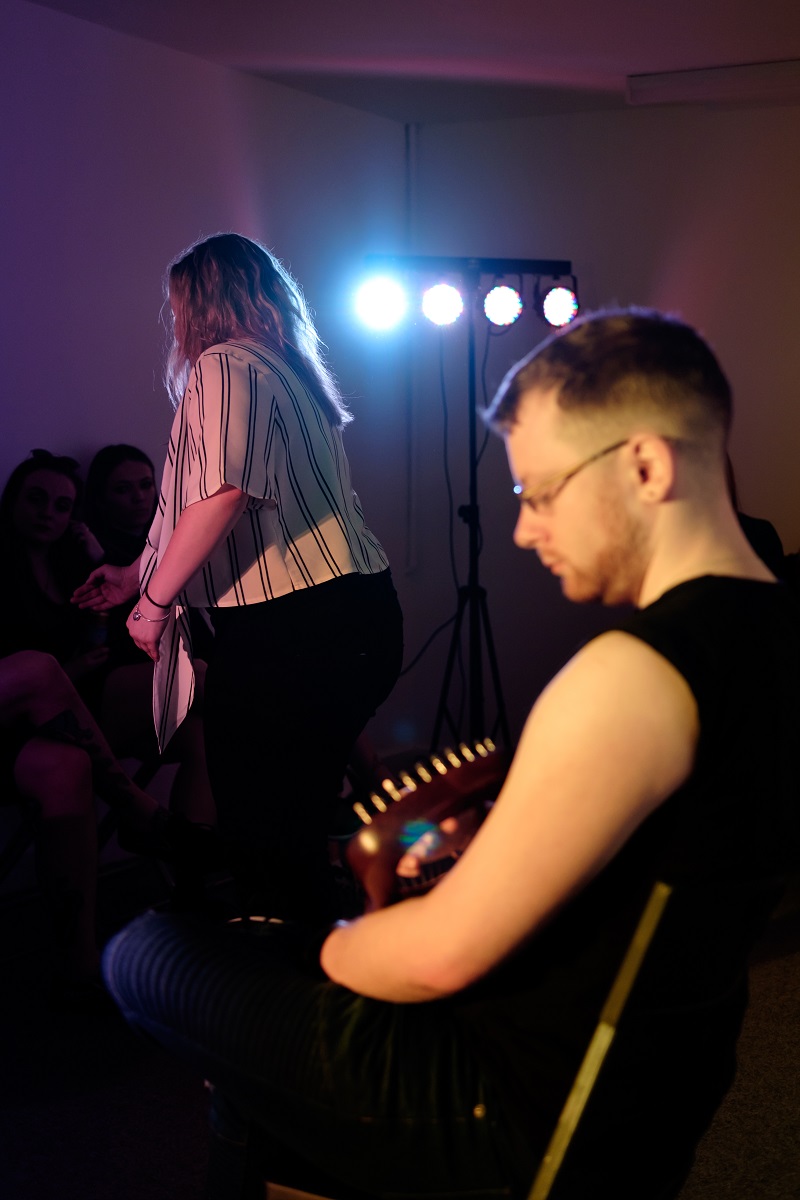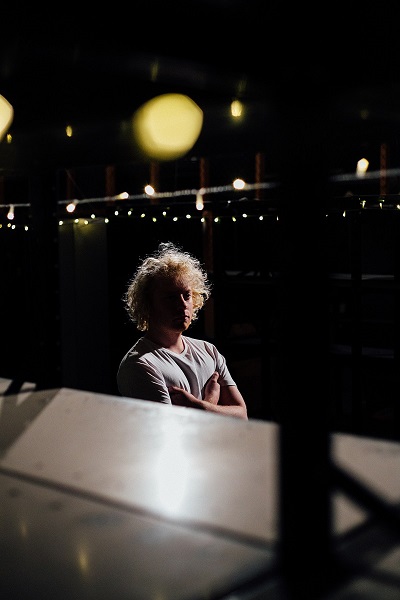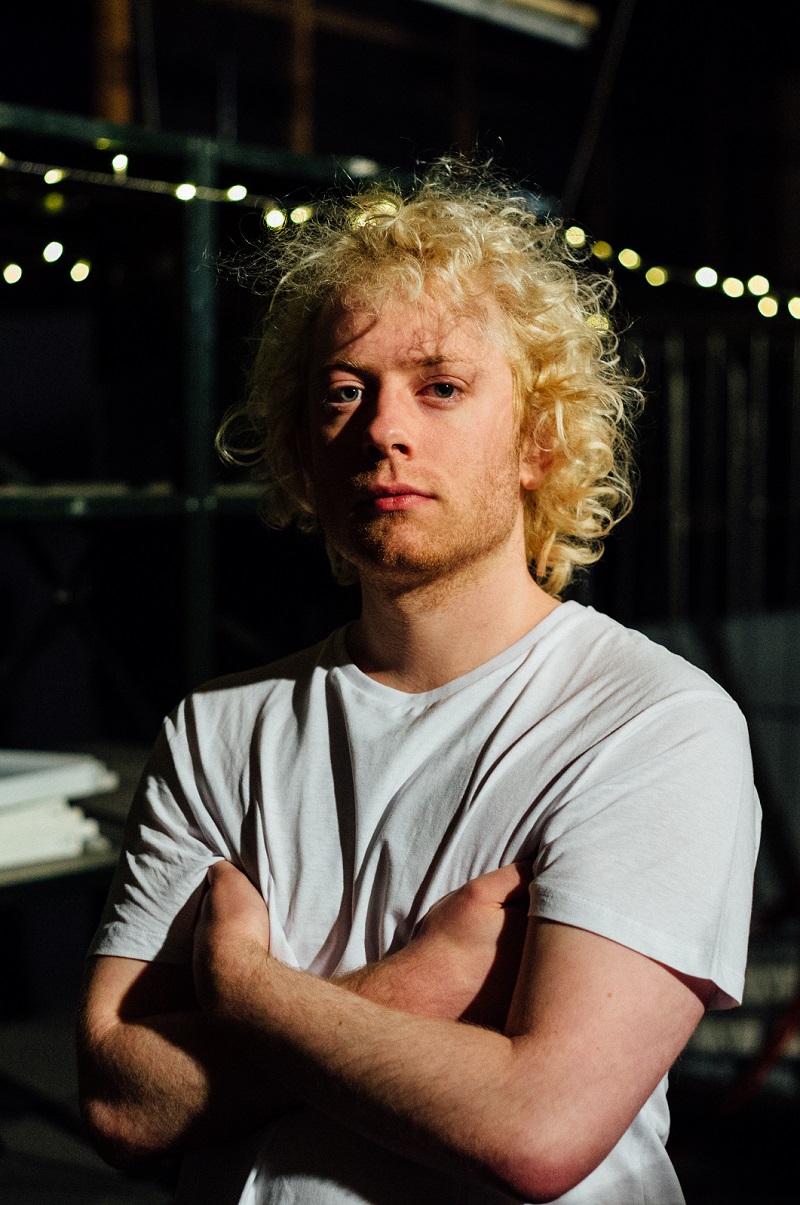Projects
It's OK to be Naked
Photos: Graeme Braidwood and PILOT Nights
It's OK to be Naked is a conversational one-man show that uses storytelling, clowning-led movement, and stripping, to explore nudity, body image, and eating disorders. After a successful scratch showing at PILOT Nights in November 2019, Tim worked on the show in collaboration with researcher Dr Nicola Buckland, of the University of Sheffield. He first performed it as a livestream for the University's Festival of the Mind 2020.
Body image is an important and topical issue: in the UK, 1.25 million people are thought to suffer from body image-related eating disorders like anorexia. Ever-present messages from the mass media about the “correct” shape of people’s bodies are linked to the development of these and other illnesses. Bodies are a political issue too: it’s controversial for even our mannequins to be fat, and news stories about what women are and aren’t allowed to wear are commonplace.
In the show, Tim discusses the politics of body image and shame, and nudity and who gets to be naked. He embodies this by taking his clothes off over the course of the show. He uses an approach that’s both down-to-earth and playful to get people to question why we often feel ashamed of our bodies and nudity.
Elements in the show
Tim demonstrates how our attitudes to our bodies and to nudity are connected to body image, hidden shame, and trauma, using autobiographical elements - showing his own naked body and discussing his relationship with it; a storytelling thread of how societal pressures lead a queer man to develop an eating disorder; and asking the audience to think about their relationship to their bodies. Tim addresses the audience directly and takes care with their journey through the show, managing the emotional experience so that the difficult parts don’t become overwhelming. For example, before introducing potentially confusing elements, he explains them, so audiences know what to expect, and he discusses the politics of talking about eating disorders in detail, which could trigger relapses in sufferers.Check out the show below; it starts at 7:00. There's also a Q&A at the end with Tim and Nicola.
Please be warned: the show addresses difficult topics and contains nudity.
Quiet Power
Written and produced with Sheffield Theatres for Paines Plough's Come to Where I Am project, Quiet Power is a monologue about a night on a hill in Sheffield, meeting ghosts, and how the sharing of stories can be healing.
Check out the piece below, and the other writers' pieces too if you can. Tim's starts at 59:00.
Please be warned: the piece addresses some difficult topics.
Not Your Kind of Trauma
Photos: Kala Heatherson
Not Your Kind of Trauma is a show about post-traumatic stress disorder that Tim created with Charlotte Blackburn and Miranda Debenham, performed by Charlotte and Tim. They decided to make it becausethey found that a lot of people don’t understand the condition; they might only know about it through depictions on TV, where it’s made into a dramatic source of conflict, rather than explored in ways that show what it’s really like for sufferers. A lot of people expect sufferers to be unstable and have traumatic flashbacks all the time. Tim, Charlotte, and Miranda wanted to show people what it’s like day-to-day, and help them understand the condition.
Elements in the show
Not Your Kind of Trauma combines energetically dancing to Charlotte and Tim's favourite songs, storytelling, live music and song. They talk openly to the audience, fostering connection with them, and offer them chocolate and wine when the show gets a bit heavy. It creates a tender and vulnerable atmosphere that encourages emotional openness and connection.Apocalypse of the Mind is a one man show set at the end of the world, written and performed by Tim. Inside humanity’s last refuge from the apocalypse, the one surviving man argues with God over whether he should try to live or end his life, through re-telling of legends and myths, music, and movement. The show explores the isolation, suffering, and cynicism of depression, and the difficulty of living with a mind that sabotages itself, as well as what’s it like to live in our society with mental health problems.

